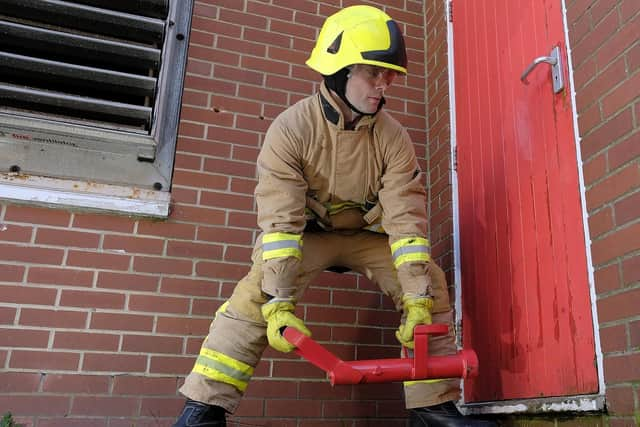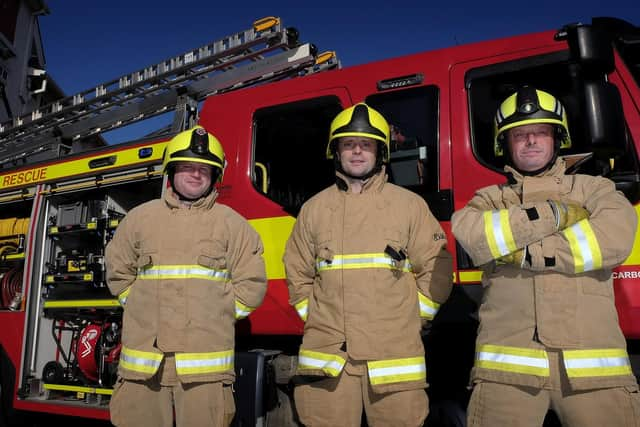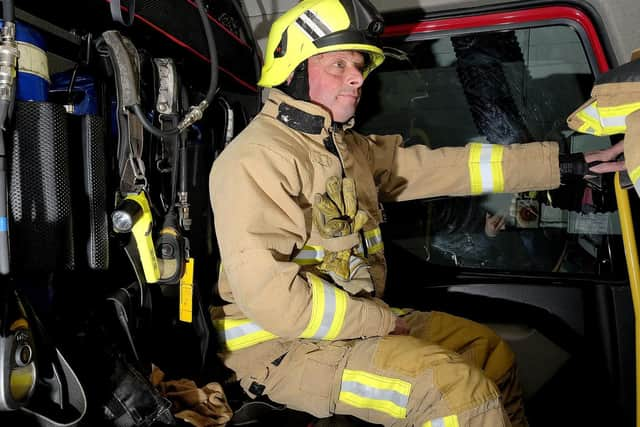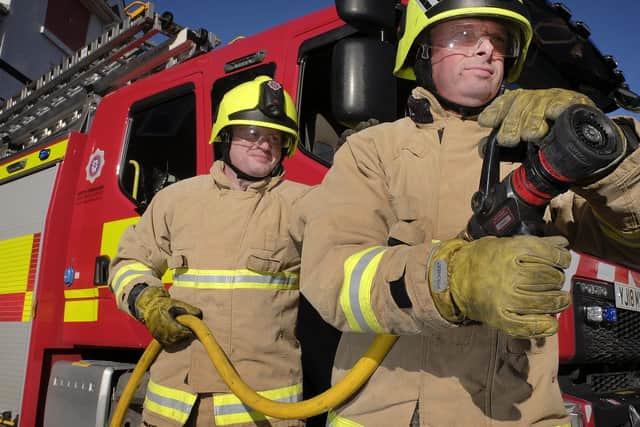From intervention to prevention – how the role of Scarborough’s fire crews is changing


On the day of my visit to Scarborough fire station, within five minutes of arriving a call comes in, setting off an alarm which rings throughout the whole building, and every member of staff leaves the station.
Advertisement
Hide AdAdvertisement
Hide AdThe incident – a small fire at a fish and chip shop – is thankfully dealt with quickly, though it does give me the chance to see how quickly the crew mobilise into action.


When a call comes in, a printer in the station prints out the basic details of the incident – the address, whether it is an automatic fire alarm, a car crash or a fire, and if there are any people
involved.
The seriousness of the call dictates how many resources are dispatched.
Crews then hurry to put on their protective clothing, jump in the fire engine and leave the station. It all happens in minutes.


Advertisement
Hide AdAdvertisement
Hide AdWhen a fire engine hurries past, the first thing many people will think is that it is heading to extinguish a burning building.
However, these days the work done by the fire service is much more varied, from rescues to car crashes to helping ambulance staff gain access to premises.
As well as a fire engine, and a smaller tactical response vehicle, Scarborough fire station is home to an aerial ladder platform which has a working height of 32 metres.
Crew manager Will Warwick explained the crews at Scarborough specialise in working at height, and are increasingly called to the Spa Bridge to people in distress.


Advertisement
Hide AdAdvertisement
Hide AdHis watch, one of four at the station, has been called to the location five times this year, working with police to help vulnerable people.
The station also works on the police’s Operation Ambience, in which various agencies work together to improve community safety in Scarborough. On the day of my visit, Will was set to install an arson-proof letterbox as part of the operation.
Crew manager Martin Imeson has been a firefighter for 29 years and has seen huge changes over his career.


Advertisement
Hide AdAdvertisement
Hide Ad“We’re just a lot quieter, there’s a lot less traditional fires,” he said. “Back in the day there were plenty of bedroom fires through winter and chip fan fires throughout the year but now the world has changed. “We’ve done our job educating people and there are less coal fires, electric blankets, chip pans.
“We still get our fair share of fires but spend much more time, the main focus really, working with the community to prevent them before they start.
“We’ve gone from an intervention service to a prevention service.”
Martin said the best way to protect your home in case of fire is still to fit smoke alarms.
Advertisement
Hide AdAdvertisement
Hide AdHe said: “A smoke alarm will save your life, if we get someone out of a fire they’re very lucky.
“Usually a smoke alarm means people will be outside the building when we arrive, if they’re not there’s a real chance they won’t survive a serious fire.”
North Yorkshire Fire and Rescue offer free home fire safety visits, when fire service staff come to the home to give safety advice, discuss escape routes and check smoke alarms.
To find out more about this service ring 01723 357790 or www.northyorksfire.gov.uk/communitysafety/fire-safety-visit
Safety advice this Bonfire Night
Advertisement
Hide AdAdvertisement
Hide AdNorth Yorkshire Fire and Rescue Service advise attending an organised bonfire event, but if you do plan to have a bonfire or fireworks party at home they have issued these tips:
- Keep fireworks in a closed box and use them one at a time.
- Light fireworks at an arm’s length with a taper.
- Always supervise children with fireworks and never give them to children under 5.
- Put used sparklers hot end down into a bucket of sand or water.
- Check for wildlife before lighting a bonfire.
- Never use paraffin or petrol on a bonfire.
- Have a hose ready.
- Keep pets inside.
- Make sure the bonfire is extinguished and the surroundings are made safe before leaving.